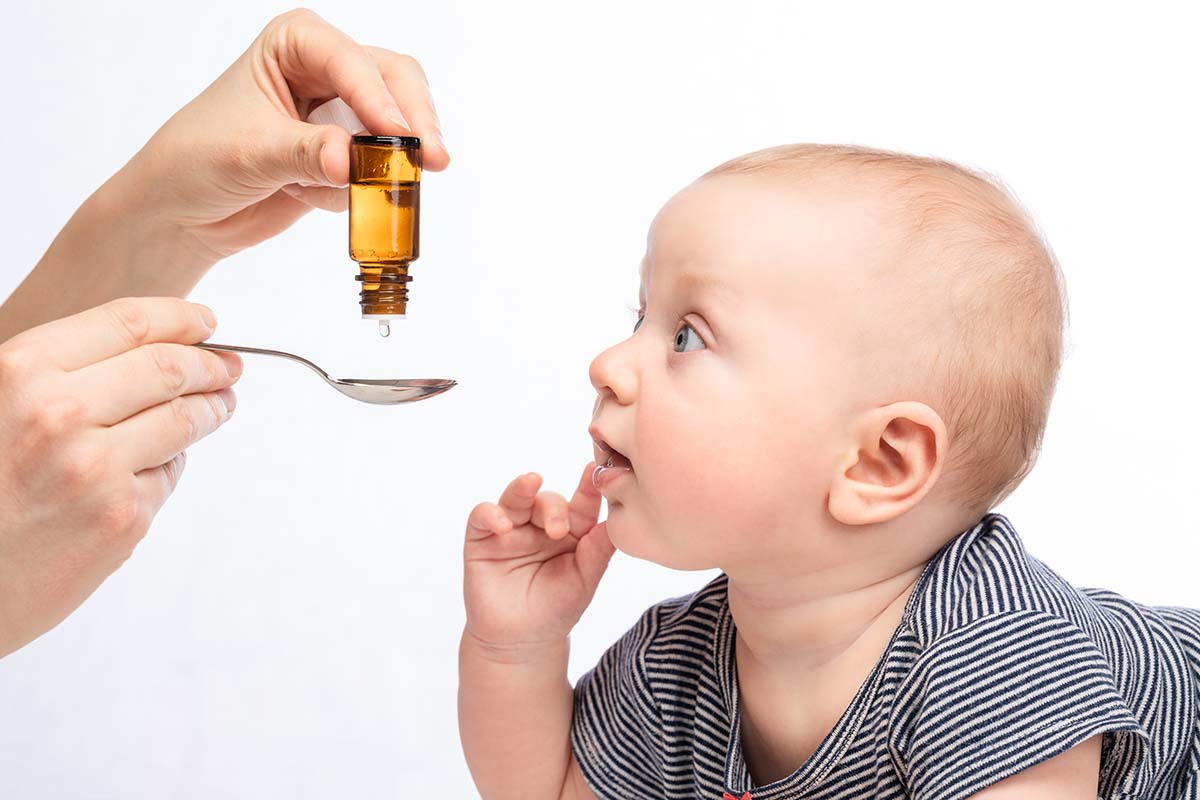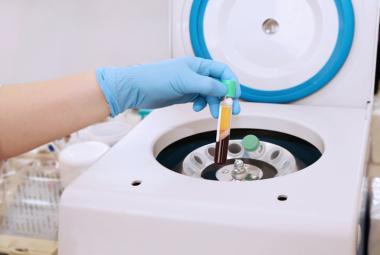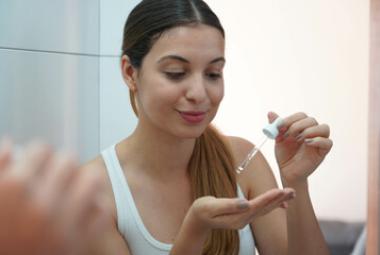Introduction
Breast milk is the optimal source of nutrition for infants because it provides complete nutrition for fats, proteins, carbohydrates, minerals, and most vitamins that are essential for growth and development. However, breast milk typically contains an insufficient amount of vitamin D for breastfed infants. This is especially true for mothers who live in areas with little sunlight or who have darker skin pigmentation. Thus, it is recommended that infants receive a vitamin D supplement of 400 IU daily (Meek et al., 2022).
Importance of Vitamin D
Vitamin D is a fat-soluble vitamin that is needed for calcium absorption and bone mineralization. When compared to formula-fed infants, exclusively breastfed infants are at an increased risk of developing vitamin D deficiency. Vitamin D deficiency is defined as serum 25-hydroxy-vitamin D (25(OH)D3, i.e. calcidiol) less than 20ng/mL (<50 nmol/L). Many experts recommend a vitamin D level between 20-40 ng/mL. 25(OH)D3 is an inactive precursor hormone made by the liver, and it is the most reliable measurement of an individual’s vitamin D status. It is converted in the kidney to the active form, 1,25-(OH)2D3, also known as calcitriol.
Vitamin D deficiency can lead to rickets in children, which is the softening and weakening of bones that can lead to growth failure, bone deformities, and fractures. In addition to rickets, vitamin D deficiency has been associated with poorer immune function and increased risk of upper and lower respiratory tract infections in infancy and childhood (Aranow, 2011).
Current Recommendations and Their Limitations
Breast milk typically contains an average of 5-80 IU per liter of vitamin D. This is insufficient to meet the daily requirement of 400 IU of vitamin D for infants, especially if the mother is not obtaining significant amounts of vitamin D daily.
The current recommendation for maternal vitamin D intake while breastfeeding is 400 to 600 IU per day, yet data suggest that supplementing the mother with this amount does little to increase the vitamin D content of her milk (Hollis et al, 2015). As a result, maternal vitamin D intake at the current recommended amount does not support adequate vitamin D status in the breastfed infant. Studies show that infants breastfed by women with vitamin D intakes of 400 IU/day typically have 25(OH)D3 levels that are below or at the low end of what is considered sufficient (Hollis et al, 2015).
Supplementing the Infant
The American Academy of Pediatrics (AAP) and the National Academy of Medicine (NAM, previously IOM) recommend that all breastfeeding infants receive direct oral supplementation of 400 IU of vitamin D daily to prevent vitamin D deficiency (Meek et al, 2022; Vieth et al., 2018). This recommendation has been in place for more than a decade, but compliance with vitamin D supplementation in breastfed infants has been tremendously low. Recent studies found that only 2-19% of infants receive the recommended vitamin D supplementation, leaving the majority of infants at high risk for vitamin D deficiency (Hollis et al., 2015). Research shows that common reasons for not supplementing infants included the infants’ dislike of the supplement, inconvenience, and maternal belief that breast milk contains adequate vitamin D (Umaretiya et al., 2017). Poor compliance with infant vitamin D supplementation has led to studies examining vitamin D supplementation in mothers.
Supplementing the Mother
Several studies have investigated whether high-dose vitamin D supplementation in mothers might provide adequate vitamin D to their breastfed infants (Hollis et al., 2015; Dawodu et al, 2019). Results from these studies clearly showed that with high enough vitamin D intake, the lactating mother transferred adequate vitamin D to the infant through breast milk without infant supplementation.
Maternal supplementation with 4000-6400 IU vitamin D per day while lactating was superior to either 400 IU or 2400 IU/day in achieving robust maternal vitamin D levels that provided sufficient vitamin D transfer to the infant (Hollis et al, 2015). However, making a sweeping recommendation for the entire population of lactating mothers may not be appropriate because there are other factors to consider when supplementing with vitamin D, such as a mother’s BMI and vitamin D exposure from food sources and sunlight. Discussing these factors with a healthcare provider and/or monitoring maternal blood levels of vitamin D can aid in the decision-making process about maternal vitamin D supplementation.
Moreover, it is important to question whether supplementing the mother will resolve the compliance burden of vitamin D supplementation or simply shift it. Advantages of maternal supplementation include increased ease of administration, avoidance of potential dosing errors in the infant, and simultaneous mother and infant supplementation. On the other hand, some mothers may not have access to vitamin D supplementation due to cost and/or lack of communication with their physician (Umaretiya et al., 2017). Mothers may also fear taking a dose of vitamin D that is above the current upper limit (IOM, 2011).
Individuals diagnosed with vitamin D deficiency are often treated with a prescription of weekly pharmacologic doses of 50,000 IU ergocalciferol (vitamin D2). A study in India demonstrated that pharmacologic doses among vitamin D-deficient breastfeeding mothers resulted in improved vitamin D status in their infants and decreased the risk of vitamin D deficiency in their infants (Trivedi et al., 2020). Treating vitamin D deficiency in breastfeeding mothers with pharmacologic doses appears safe, and regular monitoring of maternal serum 25(OH)D3 levels to stay within normal ranges is recommended.
Vitamin D Dosage and its Safety
The NAM has set the upper limit for vitamin D at 4000 IU per day (IOM, 2011). However, the Endocrine Society Practice Guidelines suggests that up to 10,000 IU per day is safe for adults (Holick et al, 2012). During the past decade, several studies have assessed the safety of high dose vitamin D supplementation among adults. No adverse events have been attributed to vitamin D supplementation at the doses ranging from 2000 to 6400 IU per day. Research shows that acute toxicity may be caused by intake of vitamin D in excess of 10,000 IU per day, resulting in a serum 25(OH)D3 concentration >150 ng/ml (Marcinowska-Suchowierska et al., 2018). Potential chronic toxicity would result from administration of doses above 4,000 IU/day for extended periods, possibly for years, leading to serum 25(OH)D3 concentrations in the 50–150 ng/ml range (Marcinowska-Suchowierska et al., 2018).
Bottom Line
Both infant vitamin D supplementation (400 IU/d) and maternal high-dose supplementation (4000-6400 IU/d) provide adequate vitamin D to the breastfed infant. Only one of these methods should be used at a time to ensure adequate vitamin D status in the infant. Compliance for supplementing infants with vitamin D is low, and this may also be an issue for supplementation of the mother. Knowing the options for vitamin D supplementation and keeping maternal preference in mind may help in deciding how best to provide adequate vitamin D to an infant. Speaking with a healthcare provider about vitamin D supplementation options is recommended for personalized guidance based on individual characteristics and risk factors that may affect vitamin D status and safety of supplementation in both the mother and infant and can help with monitoring of maternal blood levels if and when appropriate.
Cristina Natha, MS4
Christine D. Garner, PhD, RD, CLC
References
Aranow C. (2011). Vitamin D and the immune system. Journal of Investigative Medicine, 59(6), 881-886. http://dx.doi.org/10.2310/JIM.0b013e31821b8755
Dawodu, A., Salameh, K. M., Al-Janahi, N. S., Bener, A., & Elkum, N. (2019). The effect of high-dose postpartum maternal vitamin D supplementation alone compared with maternal plus infant vitamin D supplementation in breastfeeding infants in a high-risk population. A randomized controlled trial. Nutrients, 11(7), 1632. https://doi.org/10.3390/nu11071632
Holick, M. F., Binkley, N. C., Bischoff-Ferrari, H. A., Gordon, C. M., Hanley, D. A., Heaney, R. P., Murad, M. H., & Weaver, C. M. (2012). Guidelines for preventing and treating vitamin D deficiency and insufficiency revisited. The Journal of Clinical Endocrinology & Metabolism, 97(4), 1153–1158. https://doi.org/10.1210/jc.2011-2601
Hollis, B. W., Wagner, C. L., Howard, C. R., Ebeling, M., Shary, J. R., Smith, P. G., Taylor, S. N., Morella, K., Lawrence, R. A., & Hulsey, T. C. (2015). Maternal versus infant vitamin D supplementation during lactation: A randomized controlled trial. Pediatrics, 136(4), 625–634. https://doi.org/10.1542/peds.2015-1669
IOM (Institute of Medicine). (2011). Dietary Reference Intakes for Calcium and Vitamin D. Washington, DC: The National Academies Press.
Marcinowska-Suchowierska, E., Kupisz-Urbańska, M., Łukaszkiewicz, J., Płudowski, P., & Jones, G. (2018). Vitamin D toxicity–a clinical perspective. Frontiers in Endocrinology, 9. https://doi.org/10.3389/fendo.2018.00550
Meek, J. Y., Noble, L., & Section on Breastfeeding. (2022). Policy Statement: Breastfeeding and the Use of Human Milk. Pediatrics, 150(1). https://doi.org/10.1542/peds.2022-057988
Trivedi, M., Faridi, M., Aggarwal, A., Madhu, S. V., & Malhotra, R. K. (2020). Oral vitamin D supplementation to mothers during lactation-effect of 25(OH)D concentration on exclusively breastfed infants at 6 months of age: a randomized double-blind placebo-controlled trial. Breastfeeding Medicine, 15(4), 237–245. https://doi.org/10.1089/bfm.2019.0102
Umaretiya, P. J., Oberhelman, S. S., Cozine, E. W., Maxson, J. A., Quigg, S. M., & Thacher, T. D. (2017). Maternal preferences for vitamin D supplementation in breastfed infants. The Annals of Family Medicine, 15(1), 68–70. https://doi.org/10.1370/afm.2016
Vieth, R. and M. F. Holick (2018). Chapter 57B - The IOM—Endocrine Society Controversy on Recommended Vitamin D Targets: In Support of the Endocrine Society Position. Vitamin D (Fourth Edition). D. Feldman, Academic Press: 1091-1107.







